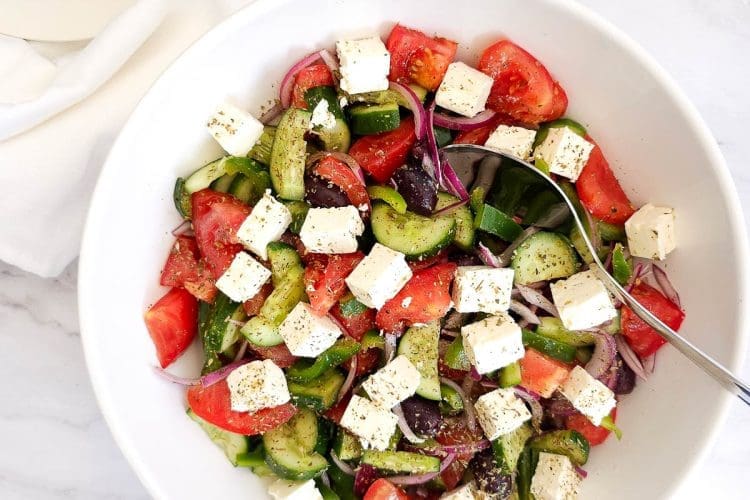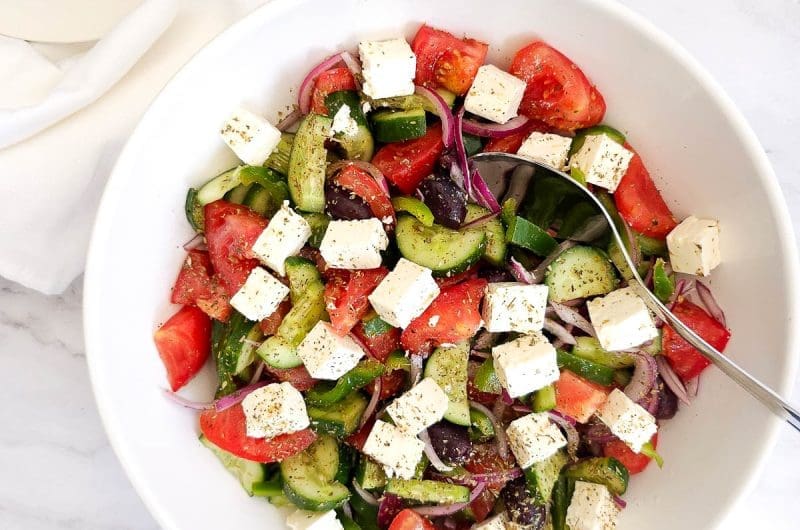Versatile and vibrant, Greek Salad is the ideal sidekick to any main dish, but with its fresh flavours and wholesome ingredients, it shines just as brightly when savoured solo.
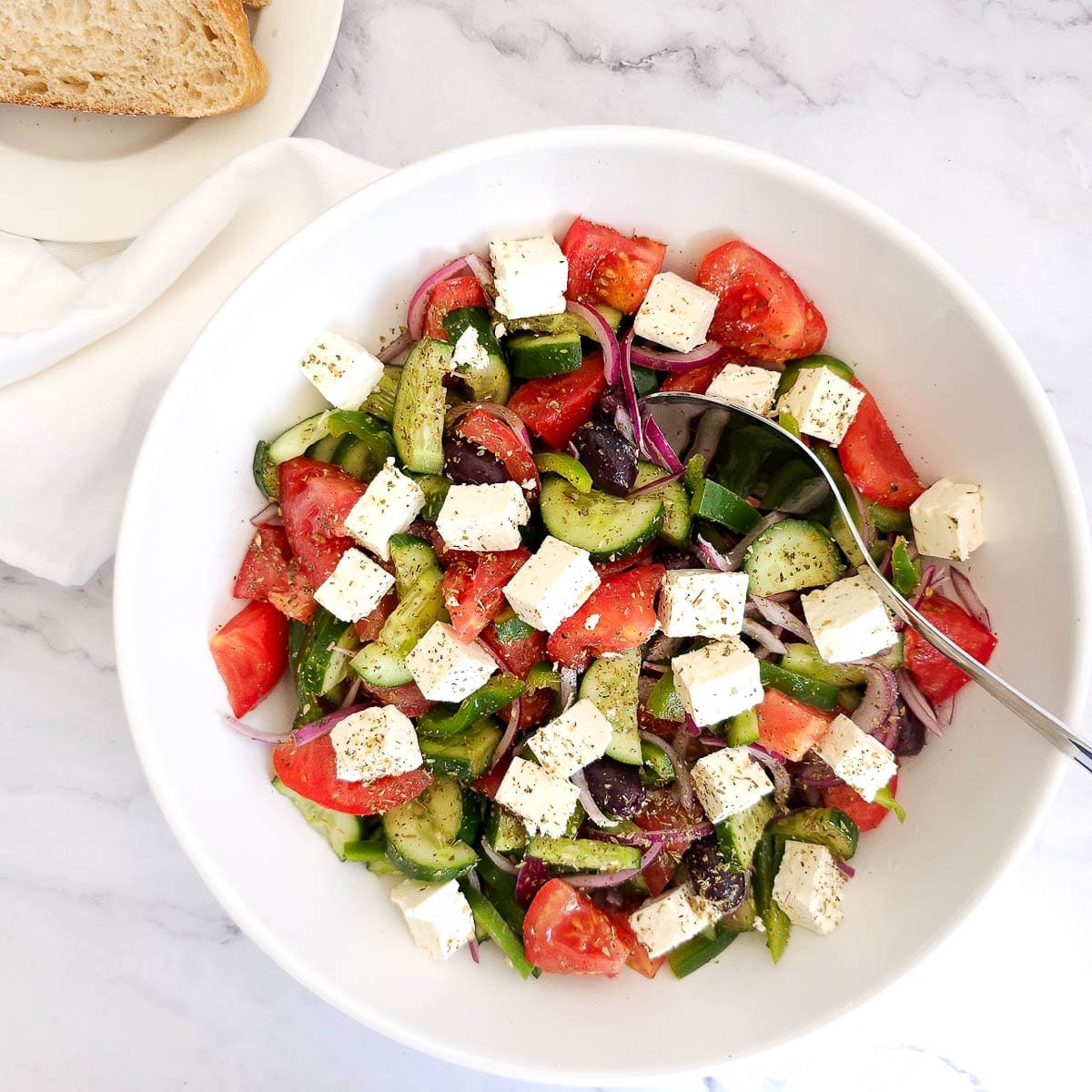
Greek salad, also known as Horiatiki Salata, or village salad, is a staple in Greek households and virtually never misses a spot on our dinner table or at family gatherings. With its complementary nature, it is the perfect accompaniment to almost any meal.
The secret to preparing a delicious Greek salad lies in the quality and freshness of the ingredients. Choose ripe, juicy tomatoes, crisp cucumbers, authentic Greek feta cheese, high-quality extra virgin olive oil, and juicy black olives. Be sure to season the salad with dried oregano, salt and pepper to enhance its flavours. Finally, toss everything together to create a refreshing and vibrant salad.
Greek Salad Ingredients
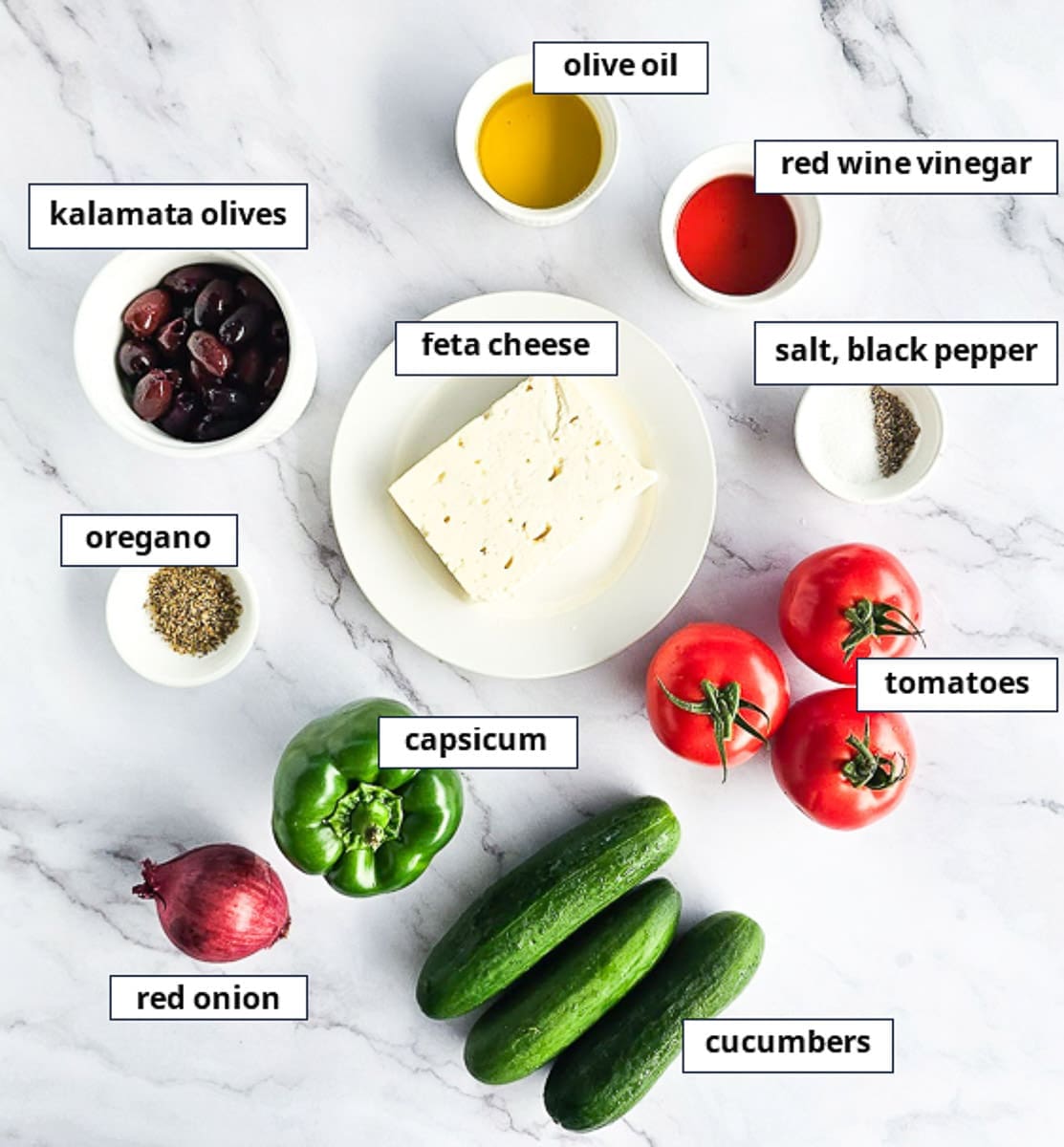
- Tomatoes: Choose ripe, firm tomatoes.
- Cucumber: Opt for crisp and firm cucumbers to add a crunchy texture to your salad. I use Lebanese cucumber, but you can also use English cucumbers.
- Green capsicum/bell pepper: Choose vibrant green capsicum to provide a colourful and slightly sweet flavour to your Greek salad.
- Red onion: Choose pungent, crisp red onions to add a sharp bite and a pop of colour to your salad.
- Feta: Best to use an authentic Greek feta cheese made from sheep’s milk or a blend with goat’s milk for a creamy and tangy element. But you can use whatever feta cheese you prefer.
- Kalamata olives: I like to buy pitted olives fresh from the deli and leave them whole. But you can use olives with seeds if you prefer.
- Dried Oregano: A staple herb in Greek cuisine, bringing aromatic flavour to the dressing.
What is Greek Salad Dressing made of?
A traditional Greek salad dressing typically consists of a few simple ingredients that complement the fresh flavours of the salad. Here’s what goes into a classic Greek salad dressing:
- Extra Virgin Olive Oil: The base of the dressing, providing richness and flavour.
- Red Wine Vinegar: Adds acidity to balance the richness of the olive oil.
Health benefits of Greek Salad
Greek salad offers a variety of health benefits, thanks to its diverse range of nutrient-rich ingredients. Ripe tomatoes provide vitamins C and K, along with antioxidants like lycopene, which may reduce the risk of chronic diseases. Cucumbers are low in calories and high in water content, keeping us hydrated and supplying essential vitamins and minerals. Green capsicum/peppers provide additional vitamins and antioxidants to the salad. Red onions not only enhance the flavour but also provide compounds that may have health benefits. Feta cheese is rich in calcium and protein, supporting bone health and muscle function. Olive oil contains heart-healthy monounsaturated fats and anti-inflammatory compounds. Olives offer healthy fats, fibre, and antioxidants, promoting overall well-being and potentially lowering the risk of heart disease. By including Greek salad in your diet, you can enjoy a range of health benefits and maintain a balanced, nutrient-rich lifestyle.
How to make Greek Salad
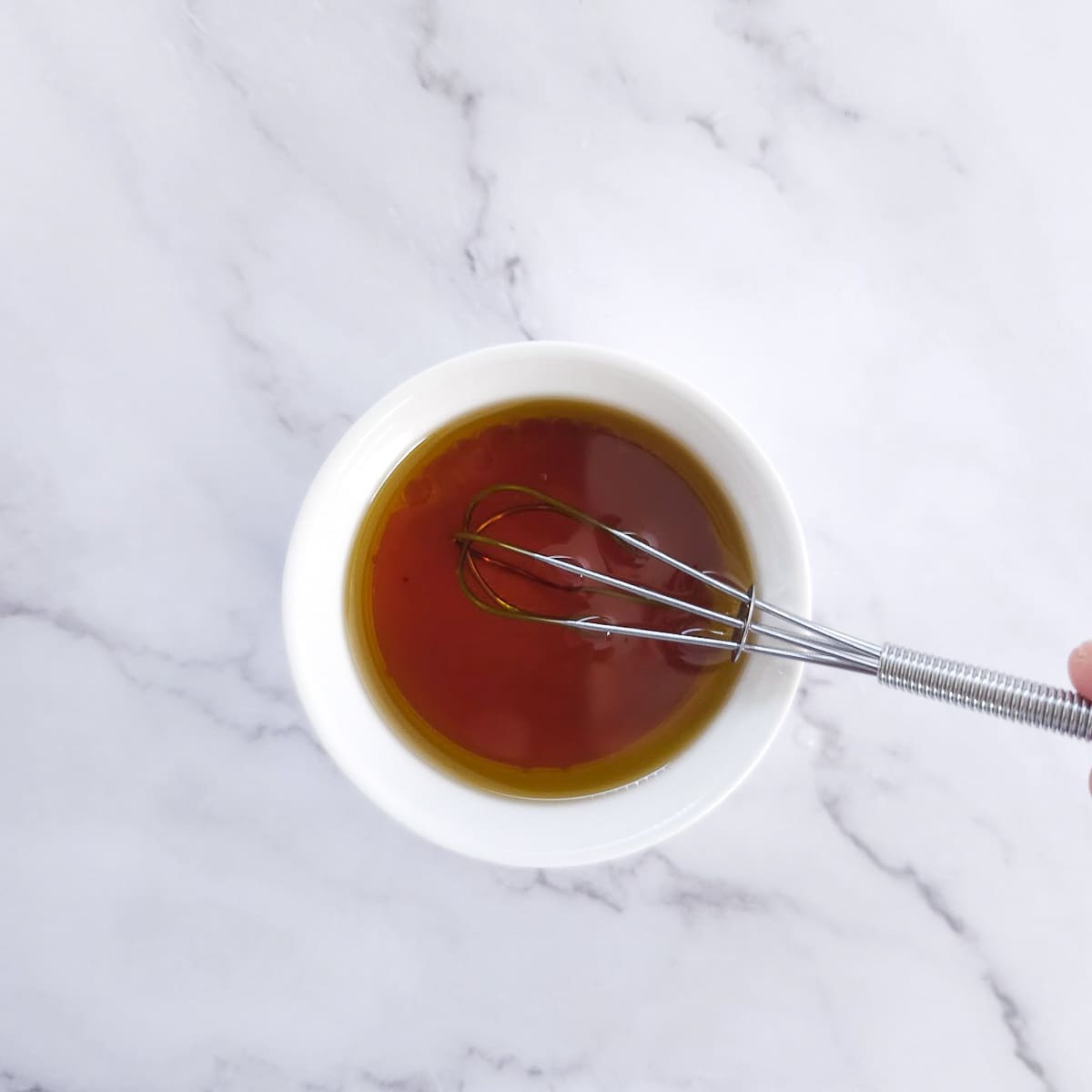
1. Combine olive oil and red wine vinegar to make the dressing.

2. Slice the onion and soak in water.

3. Slice all the vegetables.
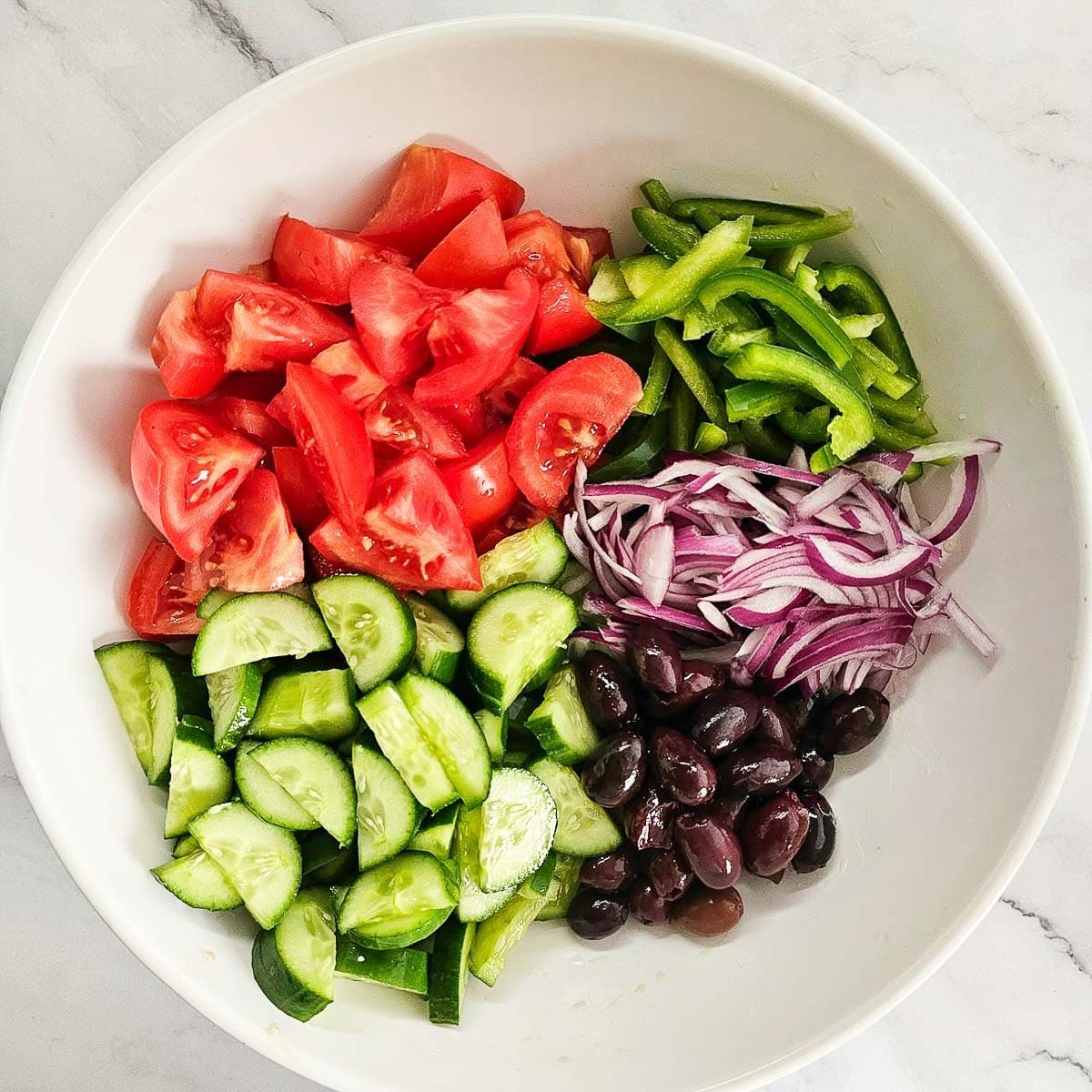
4. Combine vegetables in a bowl along with the olives.
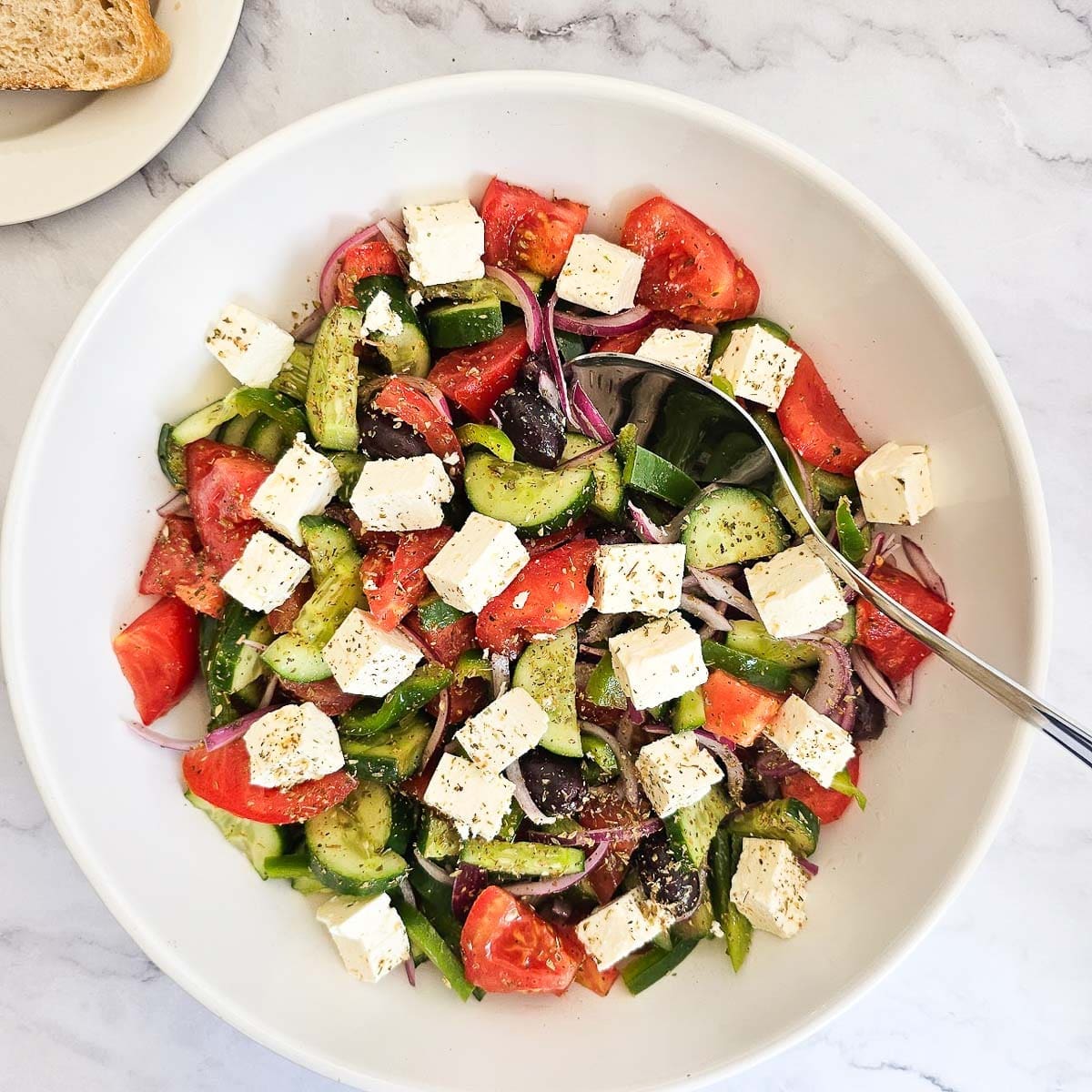
5. Garnish with diced feta and oregano and drizzle with dressing just before serving.
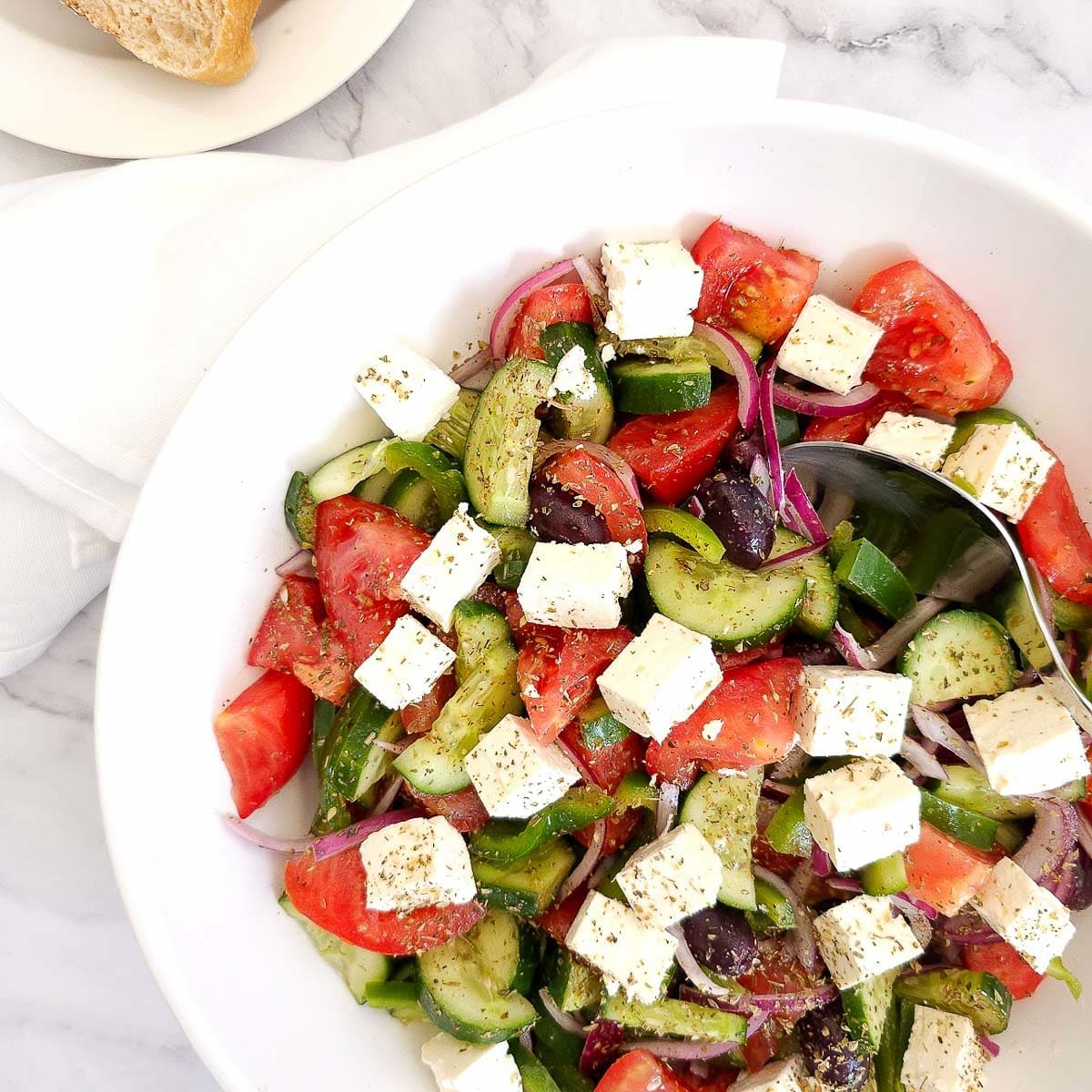
Greek salad is the perfect side to any dinner. As a serving suggestion, here are some of my favourite main meals:
- Pastitsio (Greek Pasta Bake)
- Greek Lamb and Tomato Stew (Yiouvetsi)
- Greek Butter Beans Casserole (Gigantes Plaki)
- Vegan Moussaka
- Greek Chickpea Soup (Revithia)
- Greek Style Potato Omelette
- Moussaka (Minced Beef, Eggplant and Potato Bake)
- Soutzoukakia (Greek Meatballs in Tomato Sauce)
Does Greek Salad contain lettuce?
A traditional Greek salad has no lettuce, but on some weeknights, I toss through some chopped lettuce leaves or mixed greens to add variation and more greens to our diet.
Tips for making Greek Salad
Make dressing in bulk
We eat Greek Salad with our meals at least 4-5 times a week. I make this dressing weekly and just leave it in a small bottle or jar on the kitchen bench and pour over the salad just before serving.
Greek Feta or Greek Style Feta?
The majority of feta cheese found in the supermarket dairy sections is Greek style, made from cow’s milk, whereas authentic Greek feta is made from sheep’s milk or a blend of sheep’s and goat’s milk. Greek feta has a creamy texture and a richer, tangier taste, while cow’s milk feta typically has a drier texture and a milder flavour.
What is brine and is it better to buy feta with brine or without?
Brine is a solution of water and salt, often used as a preserving agent for foods. The brine protects the cheese from exposure to air and this helps inhibit the growth of bacteria and mould. Therefore, buying feta in brine helps the feta to stay fresh for longer and can stay fresh for a month or even longer if properly stored. Additionally, storing your feta in brine helps preserve its flavour. If you find the feta tastes too salty from the brine, you can rinse your feta in cold water to reduce the salt content before using.
How long does feta last in the fridge?
When properly stored in the refrigerator, feta cheese bought in packets can last for about 1 week in the fridge, in its original packaging and in an airtight container. Leftover feta, submerged in brine, will keep for about a month or even longer, if properly stored. You can tell if feta has gone off by its appearance and smell. Look for signs of mould, unusual discolouration, or a sour smell, indicating that the cheese has spoiled and should be discarded.
To garnish your Greek Salad
For presentations, slice 4-5 thin round slices of onion and capsicum/pepper from the bottom up to place on top of your salad. Serve with fresh sourdough bread, perfect for soaking up the flavours of the dressing and tomato juices.
Storage
Greek salad can be refrigerated and will remain fresh for up to 3 days. With no leafy greens in this salad, you won’t need to worry about the lettuce leaves wilting, making it an ideal dish for prepping ahead of time.

